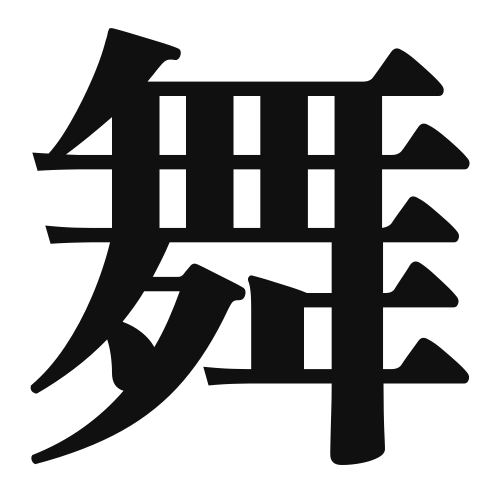1. Overview of Meaning
The kanji “舞” (pronounced “mai”) means “dance.” It represents the art of moving rhythmically to music, often expressing emotions or telling a story through movement.
2. Formation and Radical
The kanji “舞” is a combination of two components: the radical “舞” itself, which signifies dance, and the character “羽” (pronounced “hane”), meaning “feather” or “wing.” This suggests the lightness and grace associated with dancing.
The kanji is classified as a compound character (会意文字), as it combines elements to convey a specific meaning.
3. Examples of Usage
Common words and phrases that include “舞” are:
- 舞台 (butai) – stage
- 舞踊 (buyou) – dance performance
Example sentence in daily conversation:
「彼女は舞台で美しい舞を踊った。」(Kanojo wa butai de utsukushii mai o odotta.) – “She performed a beautiful dance on stage.”
4. Synonyms and Antonyms
Similar kanji with related meanings include:
- 踊 (odoru) – to dance, which emphasizes the action of dancing rather than the art form.
Antonyms include:
- 静 (shizu) – quiet, which represents stillness as opposed to the movement of dance.
5. Cultural and Historical Background
The kanji “舞” is deeply rooted in Japanese culture, where traditional dances such as “Nihon Buyo” (日本舞踊) play a significant role in festivals and ceremonies.
Proverbs and idiomatic expressions related to dance include:
- 舞い上がる (maiagaru) – to soar or to be elated, often used to describe a feeling of joy or excitement.
